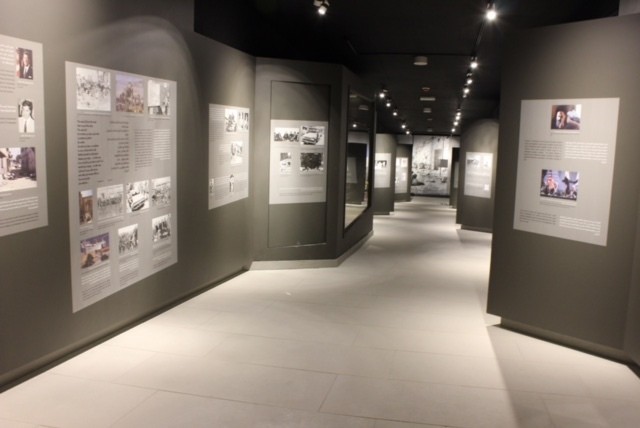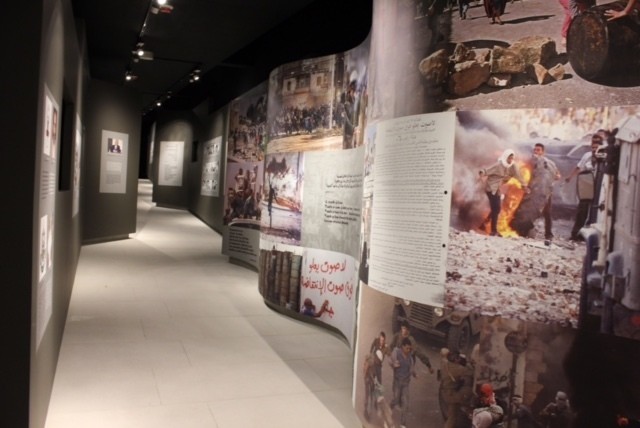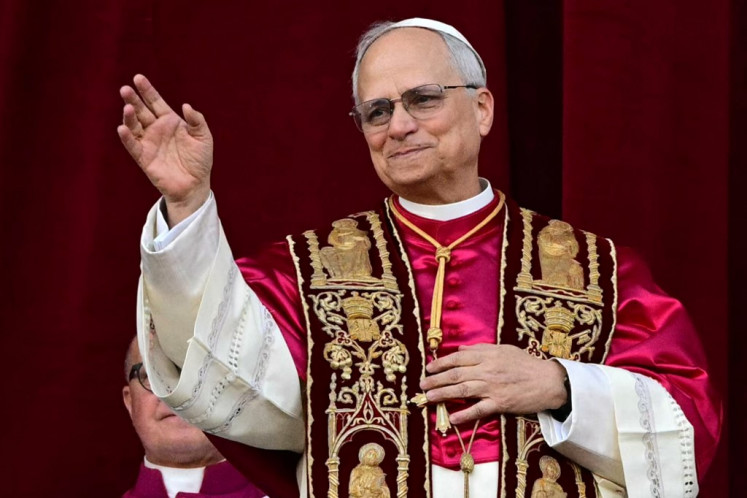Palestinians open Arafat's bedroom to public
Change text size
Gift Premium Articles
to Anyone
 In this undated handout photo, part of the new Arafat museum is seen in the West Bank city of Ramallah. (The Arafat Foundation via AP/File)
In this undated handout photo, part of the new Arafat museum is seen in the West Bank city of Ramallah. (The Arafat Foundation via AP/File)
Palestinians will soon get a chance to glimpse the small bedroom where their longtime leader Yasser Arafat spent his final years.
The 5-square meter (54-square-foot) room is the centerpiece of the new Arafat Museum, which opens to the public on Thursday to coincide with the 12th anniversary of Arafat's death.
The room has only a single bed and small closet that barely holds four suits, a few checkered headscarves and shirts. There is also a nightstand and lamp, a prayer carpet and a painting by his then-young daughter Zahwa.
Arafat spent most of the last three years of his life in this bedroom on the ground floor of his Ramallah headquarters, known as the Muqata.
Israel confined him to the building on Dec. 8, 2001, accusing him of masterminding a violent uprising at the time. He remained holed up there until Oct. 29, 2004, when Israel allowed him to travel to France for emergency medical care. He died from a mysterious illness at the age of 75 two weeks later.
The bedroom, left largely untouched since Arafat's death, is housed in a vacant wing of the Muqata that is connected to the new $7 million, 2,600 square meter (28,000 square foot) museum by a bridge.
"Arafat's story is the story of the Palestinian people in their struggle for freedom and independence," said Nasser Kidwa, Arafat's nephew and head of the Arafat Foundation.
(Read also: UNESCO expected adopted controversial Jerusalem resolution)

The museum tracks Arafat's life, saying he was born on Aug. 4, 1929, in the Old City of Jerusalem, though other accounts have said he was born in either Gaza or Cairo.
It displays many of his famous belongings: the old radio he used when he was working underground in the West Bank after Israel captured the territory in 1967, his last pair of eyeglasses, pens, handwritten papers and a gun he kept on his office desk.
It also traces the history of the Palestinians, including the "naqba," or catastrophe, the term they use to describe the displacement of hundreds of thousands of Palestinians who either fled or were forced from their homes in the war surrounding Israel's creation in 1948; the 1993 Oslo peace accord with Israel; the Israeli siege on his headquarters; his illness and death and burial in Ramallah.
Revered at home as the father of the Palestinian national struggle and seen in parts of the world as a symbol of liberation, he was reviled by many in Israel and the West as promoting violence. The museum portrays some periods, such as plane hijackings in the 1970s and the second Palestinian uprising, as part of the national struggle and avoids mention of some attacks carried out by the Palestine Liberation Organization under his watch, such as a deadly attack on Israeli Olympic athletes in Munich, in the years before the Oslo accord.
The museum displays photos of Arafat in the main stations of his life, including the Nobel Peace Prize Medal he shared in 1994 with Israeli Prime Minister Yitzhak Rabin and Foreign Minister Shimon Peres.
The medal was among many of Arafat's belongings that were looted when the rival Hamas militant group seized control of the Gaza Strip in 2007. Hamas recently returned the medal at the request of the museum.
The museum tour ends with images of Israeli bulldozers razing buildings at his headquarters and reaching the walls of his bedroom. In his office, Arafat kept posters of two foreign activists killed in clashes with the Israeli military, American Rachel Corrie and Tom Hurndall of the U.K. The guards' room includes two beds and their Kalashnikov rifles and a rocket-propelled grenade launcher.






